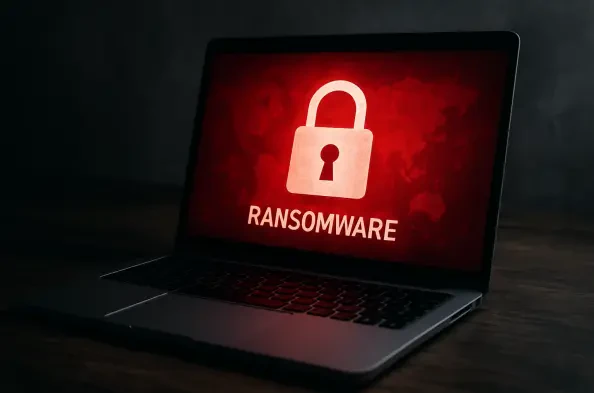In an era where digital threats loom larger than ever, a chilling development has emerged in the realm of ransomware attacks, with cybercriminals now targeting business executives with physical threats to force compliance with ransom demands. This disturbing shift marks a significant escalation from traditional digital extortion tactics, as attackers adapt to growing resistance from organizations bolstered by enhanced cybersecurity measures. A recent comprehensive report by a leading security firm, surveying 1,500 IT and security professionals across North America, the UK, Europe, and the Asia Pacific, reveals the extent of this alarming trend. The findings highlight not only the increasing aggression of ransomware actors but also the profound psychological and operational toll on businesses worldwide. As these attacks evolve into more personal and intimidating forms, the stakes for corporate leaders and their organizations have never been higher, demanding a reevaluation of defense strategies in this relentless cyber landscape.
Shifting Tactics: From Digital to Personal Intimidation
The nature of ransomware attacks has undergone a dramatic transformation, with perpetrators moving beyond data encryption to direct, personal coercion. According to the latest industry survey, a staggering 40% of ransomware incidents over the past 12 months involved physical threats against executives, with the figure climbing to 46% for companies based in the United States. This tactic is often paired with other aggressive strategies, such as leveraging regulatory pressures. In nearly half of global attacks (47%), and 58% in the US, threat actors have filed complaints with regulatory bodies to intensify pressure on victims. High-profile cases have demonstrated how attackers exploit stringent rules, like the SEC’s four-day disclosure requirement for publicly listed firms, to corner organizations into paying ransoms. These multifaceted approaches signal a clear intent to maximize psychological impact, pushing businesses into compliance through fear of legal repercussions and personal harm, rather than relying solely on data loss.
Beyond physical intimidation, ransomware groups are diversifying their extortion methods to counter declining ransom payments, which have dropped by 35% year-over-year due to improved cyber resilience. Tactics now include Distributed Denial of Service (DDoS) attacks and public shaming by exposing breaches to competitors or clients. Such strategies aim to inflict reputational damage alongside operational disruption, making non-payment an increasingly costly decision. The shift toward these hybrid approaches underscores the adaptability of cybercriminals in an environment where traditional ransomware alone is losing its edge. For executives, the threat is no longer confined to the digital sphere; it encroaches on personal safety, creating a pervasive sense of vulnerability. This evolution demands that organizations rethink incident response plans, prioritizing not just technical defenses but also executive protection and crisis management to address the human element of these attacks.
Persistent Payments and the Cycle of Extortion
Despite the decline in ransom payments, a significant majority of targeted organizations still succumb to demands, perpetuating a dangerous cycle. The survey indicates that 69% of victims paid ransoms, with the rate soaring to 81% among US-based firms, reflecting a troubling reliance on payment as a resolution strategy. However, this approach offers no guarantees—15% of those who paid received no decryption keys or were given corrupted ones, rendering their efforts futile. Even more concerning, 55% of paying organizations did so multiple times, with 29% shelling out ransoms on three or more occasions. Payment amounts vary widely, with half falling between $500,000 and $1 million, 42% under $500,000, and 8% exceeding $1 million. These figures illustrate not only the financial burden but also the risk of becoming a repeated target, as attackers view compliant victims as easy marks for future extortion.
The high frequency of repeat attacks further compounds the issue, trapping organizations in a vicious loop of payment and vulnerability. Of the 78% of surveyed businesses targeted by ransomware in the past year, 56% experienced successful breaches, and 73% of those faced multiple incidents, with 31% enduring three or more attacks. The speed of follow-up attacks is equally alarming, with 17% occurring simultaneously, 16% within a day, and 37% within one to six days. This relentless pace leaves little room for recovery, often forcing companies into hasty decisions like ransom payment under duress. Industry experts caution against treating payment as a default option, emphasizing that it fuels the criminal ecosystem and invites further aggression. Instead, the focus must shift toward breaking this cycle through robust prevention and resilience measures that deter attackers from viewing organizations as profitable targets.
Business Impact and the Path to Resilience
The consequences of ransomware attacks extend far beyond financial losses, striking at the core of business operations and employee well-being. Victims report significant disruptions, with 62% citing job losses, 61% experiencing data breaches, and 46% facing canceled cybersecurity services or insurance premiums as direct outcomes. Recovery times further highlight the operational toll, with 23% of organizations resuming normal operations in under a day, 58% taking one day to a week, and 18% requiring one week to a month. These delays disrupt workflows, erode customer trust, and strain resources, particularly for smaller firms with limited capacity to absorb such shocks. The ripple effects of these incidents underscore the urgent need for comprehensive strategies that address not only immediate threats but also long-term stability in the face of evolving cyber risks.
Looking back, the ransomware landscape revealed a pattern of escalating aggression and persistent disruption that challenged businesses at every level. Reflecting on the high payment rates and the futility often associated with them, it became evident that capitulation only deepened the problem. The path forward lies in actionable steps toward resilience—investing in advanced threat detection, employee training, and incident response frameworks that minimize vulnerability. Collaboration with regulatory bodies to streamline compliance without becoming a pressure point for attackers also emerged as a critical consideration. Ultimately, the focus shifted to empowering organizations to withstand attacks without resorting to ransom payments, ensuring that the lessons of past encounters shaped stronger, more adaptive defenses for the future.






